#SmartSensor
Explore tagged Tumblr posts
Text

A new, upgraded style of soil sensor 🪴💧🌡️
For a while, we've had a SAMD09-based soil sensor (https://www.adafruit.com/product/4026) that uses the built-in capacitive sensing. It works well but has some non-linearity in its response to wet soil. We wanted to try a different system of measuring capacitance and update it to a 3~5V friendly ATtiny816 (https://www.adafruit.com/product/5681), which lets us ditch the regulator and shifting circuitry. We'll also Stemma QT-ify it and add a NeoPixel and an AHT20 low-cost temperature/humidity sensor (https://www.adafruit.com/product/4566) for an 'all in one' gardening sensor. The un-rendered part in the center is a 3-pin DIP switch in 1.27mm pitch, for easily setting the I2C address. Coming soon.
#adafruit#soilsensor#plants#gardentools#smarthome#gardeningtech#plantsensor#sensorupgrade#diygarden#plantcare#techinnovation#smartsensor#homeautomation
15 notes
·
View notes
Text
BlueSky Air Quality Monitor 8143
The TSI BlueSky™ Air Quality Monitor is a lightweight, laser-based particle instrument designed to simultaneously measure PM2.5 and PM10 mass concentrations, as well as temperature and relative humidity. The device purchase includes a subscription to both TSI Link™ Software (Premium account) and Data Services for one, two or three years depending on your choice.
Product Details As an Internet of Things (IoT) solution, these hyperlocal, cloud-based air quality monitors offer data interfacing using WiFi, and come standard with an SD memory card for duplicate data storage, software and cloud data services. While specifically designed for outdoor environmental monitoring, BlueSky Air Quality Monitors can also be utilized inside buildings, homes and manufacturing facilities to measure indoor air quality. Also interested in monitoring common outdoor pollutants? Check out our BlueSky 8145 model that measures CO, CO₂, NO₂, SO₂, O₃ in addition to the traditional particulate matter (PM) mass concentrations, temperature, relative humidity (RH), and barometric pressure (BP). Features & Benefits
Precision data – TSI factory-calibrated PM sensor with the option to program a custom calibration factor
Real-time map of live data – Ability to stream and display real-time data from the cloud using WiFi, without additional software or an App
Unique laser-based light scattering particle sensors – Simultaneously outputs PM1.0, PM2.5, PM4.0, PM10, temperature, and humidity
Designed for outdoor use – Performs consistently in a wide range of humidity and temperatures, and protected from rain, insects, and direct sunlight
Barometric pressure measurement
Pin-point levels of gas pollution – Measures CO₂ (Carbon Dioxide), NO₂ (Nitrogen Dioxide), CO (Carbon Monoxide), O₃ (Ozone), and SO₂ (Sulfur Dioxide)
Three ways to download data – From TSI Link Software (.csv file), using the API data service, or from the removable SD card
Data buffering – Internally logs data (up to 1 week at 15 min intervals via onboard memory) for data redundancy
Easy and quick installation
Optional solar system, outdoor enclosure, and cellular modem accessories available (excludes SIM. Visit www.technovalue.in for more info.

#AirQuality#AirQualityMonitor#TSIBlueSky#PM25#PM10#EnvironmentalMonitoring#CleanAir#AirPollution#SmartSensor
1 note
·
View note
Text

Omron D6T-1A-02 Digital Temperature Sensor – Wide Range High Accuracy I2C Output
The Omron D6T-1A-02 is a compact high-precision digital temperature sensor designed for non-contact sensing in smart electronics and automation. With I2C interface, ±1.5°C accuracy and a wide temperature range from -40°C to +80°C it is ideal for industrial, HVAC and embedded system use.
Key Features:
Wide Temp Range: -40°C to +80°C Accuracy: ±1.5°C Digital I2C Output Supply Voltage: 4.5V – 5.5V Current Consumption: 3.5 mA Mounting: PCB Mount No Shutdown Mode – Continuous Monitoring
📦 Bulk orders available – DM us or call to get the best price!
📞 Contact Today : +919810987429
📥 Enquire Now : [email protected]
#OmronD6T#TemperatureSensor#I2CSensor#SmartSensor#NonContactSensor#BoardMountSensor#HVACSensor#EmbeddedSystemSensor#PCBMountSensor#OmronElectronics#DigitalTempSensor
0 notes
Text
Motion Sensors: The Complete Guide to Smart Detection Technology (2025)
Motion sensors have revolutionized home security and automation, offering convenience, energy efficiency, and enhanced safety. In this comprehensive guide, we'll explore everything you need to know about motion sensor technology, from basic functionality to advanced applications in modern smart homes.
What Is a Motion Sensor?
A motion sensor is an electronic device that detects movement within its coverage area. When movement is detected, these devices can trigger various responses, such as activating lights, security systems, or sending notifications to your smartphone.
Types of Motion Sensors
Passive Infrared (PIR) Sensors
Most common type in residential applications
Detects body heat and movement
Energy-efficient and cost-effective
Ideal for indoor and outdoor lighting systems
Microwave Sensors
Emits microwave radiation to detect movement
Covers larger areas than PIR sensors
More expensive but highly accurate
Less affected by temperature changes
Dual Technology Sensors
Combines PIR and microwave technologies
Reduces false alarms
Provides more reliable detection
Ideal for high-security applications
Key Applications
Home Security
Intrusion detection
Automated surveillance
Security camera activation
Emergency lighting
Smart Lighting
Automatic light control
Energy conservation
Pathway illumination
Garage and entryway lighting
Energy Management
HVAC system optimization
Occupancy-based climate control
Automated ventilation
Smart thermostat integration
Installation Tips
Optimal Placement
Mount sensors at appropriate heights (typically 6-8 feet)
Avoid direct sunlight exposure
Keep away from heating/cooling vents
Consider pet movement patterns
Smart Home Integration
Automation Possibilities
Custom lighting scenes
Security system coordination
Climate control automation
Smart device triggering
Energy Efficiency Benefits
Cost Savings
Reduces unnecessary lighting usage
Optimizes HVAC operation
Lowers electricity bills
Extends bulb lifespan
Environmental Impact
Decreases energy waste
Reduces carbon footprint
Supports sustainable living
Promotes green technology
Troubleshooting Common Issues
False Triggers
Adjust sensitivity settings
Clean sensor lenses regularly
Update firmware if applicable
Check for interference sources
Buying Guide
Key Considerations
Coverage area needs
Indoor vs outdoor use
Power source requirements
Smart home compatibility
Budget constraints
Top Features to Look For
Weather resistance (for outdoor units)
Adjustable sensitivity
Remote control capabilities
Battery backup options
Warranty coverage
Future of Motion Sensor Technology
Emerging Trends
AI-powered detection
Enhanced smartphone integration
Improved energy efficiency
Advanced security features
Innovation Areas
Facial recognition capabilities
Gesture control integration
Environmental adaptation
Enhanced range and accuracy
Conclusion
Motion sensors represent a cornerstone of modern home automation and security. Whether you're looking to enhance your home's security, improve energy efficiency, or simply add convenience to your daily life, understanding motion sensor technology is essential. By choosing the right type and implementing it correctly, you can create a smarter, safer, and more efficient living space.
FAQs
How long do motion sensors typically last?
Quality motion sensors can last 5-10 years with proper maintenance.
Can pets trigger motion sensors?
Many modern sensors offer pet immunity up to certain weights (typically 40-80 lbs).
Do motion sensors work through walls?
Most standard motion sensors cannot detect movement through solid walls.
What's the difference between indoor and outdoor motion sensors?
Outdoor sensors are weatherproof and typically have different sensitivity settings.
Can motion sensors be hacked?
While possible, most modern sensors include security features to prevent unauthorized access.
#AutomaticLighting#AutomationTechnology#BuildingAutomation#EnergyEfficiency#EnergyManagement#HomeAutomation#HomeAutomationUSA#HomeInnovation#HomeSecuritySystems#IoTSecurity#MotionDetection#MotionSensor#PIRSensor#SecurityCamera#SecurityEurope#SecurityInstaller#SecuritySolutions#SecuritySolutionsWorld#SecuritySystems#SecurityTechnology#SmartBuilding#SmartHome#SmartHomeDevice#SmartHomeIntegration#SmartHomeUS#SmartLighting#SmartSecurity#SmartSensor#SmartTechGlobal#TechnologySolutions
0 notes
Text
#Renesas Electronics#smartsensor#monitoring#volatileorganiccompounds#humanhealth#powerelectronics#powermanagements#powersemiconductor
0 notes
Text
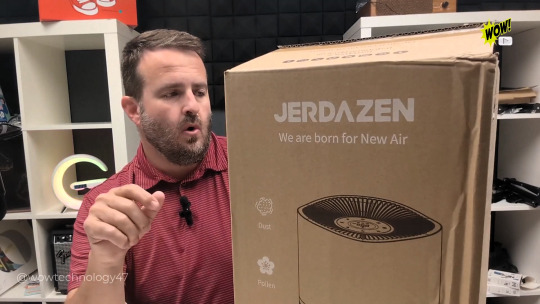
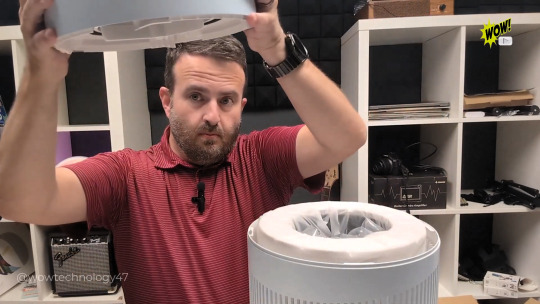
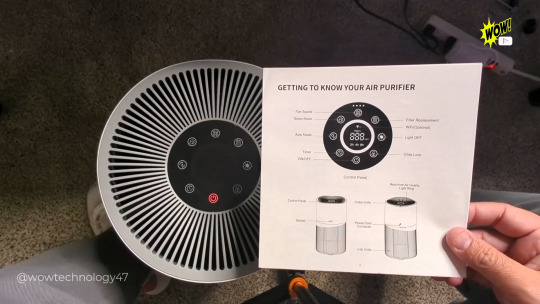
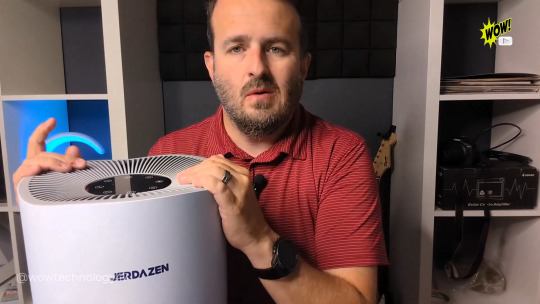
The Best Choice for 400 CADR Air Purifiers - WOW Technology
✔ Jerdazen Air Purifiers for Home Large Room: https://www.youtube.com/watch?v=a0-Rqh-mekc&t=132s ✔ Jerdazen website: https://www.jerdazen.com/ ✔ Enhance your indoor air quality with the Jerdazen JZ450 air purifier. Featuring a smart PM2.5 sensor with color indicators (red, yellow, green), it delivers real-time air quality feedback, helping you breathe cleaner, healthier air.
1 note
·
View note
Text
https://smarden.in/the-magic-of-smart-sensors-in-iot-and-home-automation/
In the ever-exciting world of smart tech, smart sensors take the spotlight, being the secret sauce that seamlessly blends our gadgets in the Internet of Things (IoT) and home automation systems. But, hold up—what makes a sensor ‘smart’ and how does it sprinkle a bit of magic in our tech-infused homes?
#smarden#smarthome#homeautomation#iot#technology#internetofthings#security#smartsensor#motionsensor#doorsensor
0 notes
Text
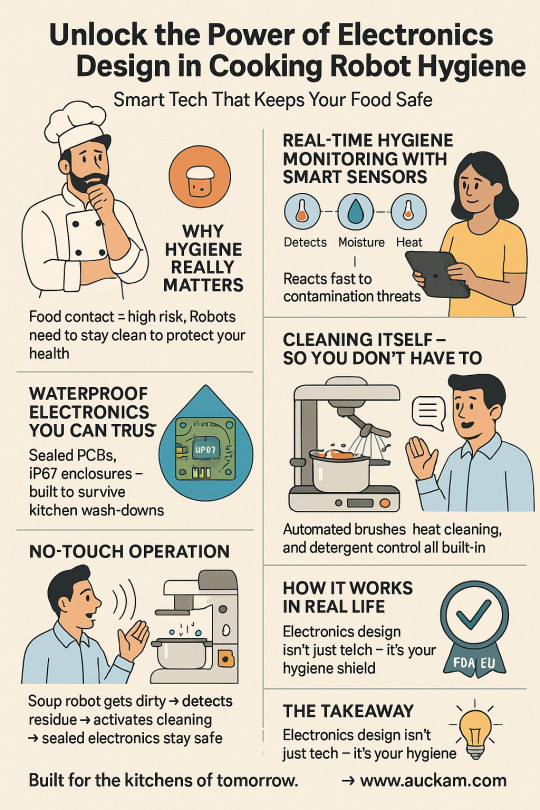
Smart kitchens need smarter hygiene. This infographic breaks down how advanced electronics design plays a vital role in keeping cooking robots clean, safe, and FDA/CE-compliant. From sealed PCBs and IP67 enclosures to real-time sensor monitoring and no-touch cleaning cycles, smart tech ensures food safety without manual effort.
🌐 Explore how we design electronics for hygiene-first kitchens: www.auckam.com 📖 Dive into the full blog: https://medium.com/@digital.auckam/unlock-the-power-of-electronics-design-in-cooking-robot-hygiene-fd4a701514d9
#CookingRobot#SmartKitchen#ElectronicsDesign#PCBDesign#EmbeddedSystems#FoodSafetyTech#IP67Electronics#FDAApprovedTech#RobotAutomation#HygienicDesign#KitchenAutomation#TechForFood#SmartSensors#AuckamTechnologies#wwwauckamcom#FoodRobotics#ElectronicsInFoodIndustry
0 notes
Text
pH Sensors Market Future Trends Reflect Advancements in Automation, Miniaturization, and Smart Monitoring Systems
The pH sensors market future trends are being shaped by rapid technological advancements, evolving industrial requirements, and a growing need for precision in chemical and biological measurements. As industries across sectors such as water treatment, pharmaceuticals, food and beverage, and environmental monitoring demand greater accuracy and efficiency, pH sensors are becoming smarter, more compact, and more integrated with digital ecosystems. These future trends are poised to redefine how pH measurements are used in both laboratory and field environments.
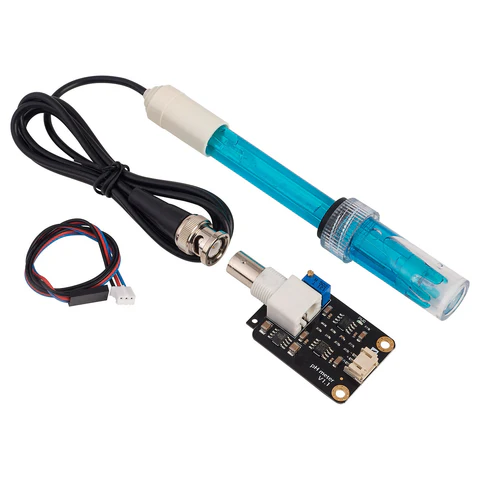
One of the most prominent trends is the integration of pH sensors with digital platforms and smart technologies. Traditional analog pH sensors are increasingly being replaced with smart digital sensors that offer real-time data transmission, self-calibration, and predictive maintenance capabilities. These digital solutions are transforming industrial monitoring by reducing downtime, improving accuracy, and enabling remote control and diagnostics. As the Internet of Things (IoT) continues to expand, smart pH sensors are expected to become a key component of connected industrial systems.
Miniaturization and portability are also gaining momentum in the pH sensors market. Compact and portable pH meters are in high demand across field-based applications, particularly in environmental testing and agricultural monitoring. Researchers and field technicians require easy-to-carry tools that deliver reliable results without bulky instrumentation. Manufacturers are responding by designing sleek, durable, and lightweight devices with built-in storage and wireless connectivity, allowing for greater mobility and faster on-site decision-making.
Another significant trend is the increased use of pH sensors in environmental sustainability initiatives. As water pollution and soil degradation become critical global concerns, real-time pH monitoring is essential in assessing the health of natural ecosystems. Governments and regulatory bodies are enforcing stricter environmental regulations, pushing industries to adopt continuous pH monitoring systems. This rising environmental consciousness is opening new opportunities for sensor deployment in wastewater treatment, aquaculture, and air quality control systems.
In the biopharmaceutical and healthcare sectors, the role of pH sensors is expanding rapidly. These industries demand stringent quality control, and pH levels often play a vital role in product consistency and safety. In pharmaceutical manufacturing, inline pH measurement is crucial for fermentation processes, bioreactor monitoring, and sterile environments. Future trends point toward sensors that can withstand aggressive cleaning protocols, offer faster response times, and provide integration with automated process control systems.
The food and beverage industry is another significant driver of future pH sensor innovations. With increased emphasis on food safety, shelf life, and taste consistency, accurate pH measurement has become an essential quality parameter. Next-generation sensors are being developed to work in high-temperature environments, with faster calibration and improved resistance to fouling. Trends also include sensors embedded in packaging or production lines for non-intrusive, continuous monitoring.
Material innovation is further enhancing sensor capabilities. Electrode technology, particularly for glass and non-glass electrodes, is evolving to meet the demands of harsh environments. Newer materials are being explored to extend the life of sensors, improve their resistance to chemical corrosion, and maintain accuracy across diverse pH ranges. Non-glass solid-state sensors are especially gaining interest in industries where glass breakage is a concern, such as food processing or medical applications.
Wireless technology and mobile integration are shaping the future of pH sensor usability. Wireless pH sensors can now connect directly to smartphones or cloud platforms, allowing users to monitor results in real-time, receive alerts, and log data for further analysis. This is particularly useful in remote operations, agricultural applications, and scenarios requiring fast, data-driven decisions. The fusion of sensors with mobile apps and cloud storage also enables better long-term data management and regulatory compliance.
The pH sensors market is also witnessing the emergence of AI-powered diagnostics. Artificial intelligence and machine learning algorithms are being developed to interpret pH data patterns, predict anomalies, and suggest corrective actions automatically. These intelligent systems can optimize operational efficiency in industrial processes, reduce human intervention, and minimize the risk of human error.
Customization and modular designs represent another future trend. Users are seeking flexible solutions that can be tailored to specific operational needs. Manufacturers are now offering modular sensor systems that can be easily adapted or upgraded, whether in terms of connectivity, calibration options, or sensor length and size. This adaptability allows companies to respond quickly to changing conditions or regulatory demands.
In conclusion, the future of the pH sensors market is marked by a shift towards smarter, more connected, and application-specific solutions. With rising demand from environmentally conscious industries, precision-focused healthcare applications, and efficiency-driven manufacturing processes, pH sensors are evolving beyond traditional laboratory instruments. Companies that invest in automation, miniaturization, material durability, and digital integration will be best positioned to lead in a market defined by innovation and adaptability.
0 notes
Text
Graywolf IAQ meter
Reliably measure key specific pollutants (VOCs, CO, O3, NO2, NH3, HCHO, etc.; choose from 25+ gas sensors), as well as Particulate, Ventilation Rates (CO2 and Airflow), Differential Pressure (DP) and more. High performance, fast response instrumentation for consistent use over portable, long-term and continuous IAQ testing applications.
Occupant wellness is rapidly gaining awareness as a win-win for occupant health and productivity, and for building owners’ bottom line.
COVID-19 has enhanced the need for measurement of ventilation rates, airflow, pollutant pathways and validation of fixed sensors for specific IAQ parameter monitoring in schools, hospitals, public buildings, workplaces, and other indoor facilities of all types.
GrayWolf IAQ meters, monitors and instruments optimize the balance between facility energy efficiency and occupant health, comfort and productivity.
Identify potential IAQ issues before they become problems and respond immediately to complaints with the highly accurate and most intuitive portable IAQ meters, monitors and testing devices available today.
The DirectSense II smart probes accommodate true plug & play sensors (up to 8 in a single probe), optimized for high-end, accurate measurements targeted for commercial, industrial, research, and institutional IAQ applications.
Visit www.technovalue.in for more info
#IndoorAirQuality#IAQMonitoring#AirQualitySensors#EnvironmentalMonitoring#VOCDetection#ParticulateMonitoring#CO2Monitoring#AirflowMeasurement#DifferentialPressure#GasDetectionTechnology#AdvancedIAQ#CleanAirSolutions#MonitorYourAir#AirQualityMatters#TechForGood#SustainableTechnology#SmartSensors#FutureOfAirQuality#BreatheBetter#SmartMonitoring#AirQualityExperts
0 notes
Text
Boron Analyzer Market Trends and Future Growth Opportunities Across Global Industrial Applications and Technologies
The Boron Analyzer Market is witnessing unprecedented growth, driven by the rising need for accurate and real-time boron measurement across diverse industrial applications. As environmental regulations tighten and advanced manufacturing practices evolve, boron analyzers are becoming indispensable tools for quality assurance, process optimization, and environmental monitoring.

Market Overview: Shifting Demands and Strategic Applications
Boron analyzers are specialized instruments designed to detect and quantify boron levels in various materials and solutions. Industries such as glass manufacturing, nuclear energy, metallurgy, and environmental science are some of the largest consumers of boron analyzers. These industries require high precision in boron content to meet safety, efficiency, and quality standards.
In recent years, the market has evolved to meet the increasing demand for inline and portable analyzers, offering flexibility in real-time monitoring. Additionally, the rise in water treatment and semiconductor industries has further widened the scope of applications for boron analysis.
Key Market Drivers: Catalysts for Expansion
Several major factors are accelerating the growth of the Boron Analyzer Market:
1. Stringent Environmental Regulations
Governments and regulatory bodies across the globe are enforcing strict guidelines to control pollution and maintain water quality. Since boron can have toxic effects on plants and aquatic life at high concentrations, real-time monitoring using boron analyzers is essential, especially in wastewater treatment plants.
2. Growth in Semiconductor and Electronics Sector
The semiconductor industry, known for its demand for ultrapure materials, uses boron in doping processes. Precise measurement and control of boron levels are crucial in wafer fabrication and other manufacturing steps, increasing the need for advanced analyzers.
3. Industrial Process Optimization
Industries such as glass and ceramics manufacturing rely on maintaining exact boron levels to achieve desired physical properties. In metallurgy, boron analyzers contribute to strengthening metal alloys, making them critical tools for process optimization and quality control.
4. Rising Investments in Research and Development
Significant investment in R&D has led to the development of more compact, efficient, and AI-integrated analyzers. These innovations not only improve accuracy and detection speed but also enhance user experience through smart interfaces and remote diagnostics.
Emerging Market Trends: What’s Shaping the Future?
Smart Technologies Integration
The integration of Internet of Things (IoT) and Artificial Intelligence (AI) into boron analyzers is revolutionizing the industry. These smart systems enable predictive maintenance, cloud-based data management, and automated alerts, which help reduce operational downtime and costs.
Miniaturization and Portability
There is a notable trend toward portable and handheld boron analyzers. These devices are particularly beneficial for field applications in environmental monitoring and remote industrial sites where traditional laboratory analysis is not feasible.
Asia-Pacific Leading the Charge
The Asia-Pacific region, particularly China, Japan, and South Korea, is witnessing rapid industrial growth, thereby becoming a hotbed for boron analyzer demand. With increasing investments in electronics, manufacturing, and environmental monitoring, this region is expected to lead market expansion in the coming years.
Customization and Industry-Specific Solutions
Manufacturers are now offering tailor-made analyzers designed for specific industrial requirements. This customization trend is increasing market penetration across niche applications, such as food safety, pharmaceuticals, and nuclear power.
Market Challenges: Obstacles to Watch
Despite strong growth prospects, the Boron Analyzer Market faces several challenges:
High Initial Costs: Advanced boron analyzers come with significant capital investment, which can be a barrier for small and mid-sized enterprises.
Complex Calibration Requirements: These devices require frequent calibration and maintenance to ensure accuracy, posing operational challenges.
Limited Awareness in Developing Regions: In many emerging economies, lack of awareness and technical expertise limits the adoption of boron analysis technology.
Future Growth Opportunities: Unlocking New Potential
Expansion in Environmental Monitoring
As global awareness of environmental issues grows, governments and NGOs are investing more in water and soil monitoring. Boron analyzers are well-positioned to play a central role in these initiatives.
Strategic Collaborations and Partnerships
Collaborations between manufacturers and research institutes are leading to the development of next-generation boron analyzers. These partnerships foster innovation and open up new applications in unexplored markets.
Digital Transformation
The broader shift toward digital and automated systems in industrial processes will further embed boron analyzers into core operational frameworks. Cloud-based platforms, mobile integration, and machine learning will redefine analyzer capabilities in the next decade.
Conclusion: A Market Poised for Dynamic Evolution
The Boron Analyzer Market is undergoing a significant transformation, propelled by technological advancements, regulatory pressures, and expanding industrial applications. While challenges such as high costs and complexity remain, the opportunities presented by smart technologies, miniaturization, and regional expansion far outweigh the constraints. Businesses that invest in cutting-edge solutions and adapt to evolving industry demands will be best positioned to capitalize on the market's vast potential.
#BoronAnalyzerMarket#IndustrialTechnology#EnvironmentalMonitoring#SemiconductorManufacturing#ProcessOptimization#MarketTrends#TechInnovation#SmartSensors#WaterQualityMonitoring#AsiaPacificMarkets
0 notes
Text
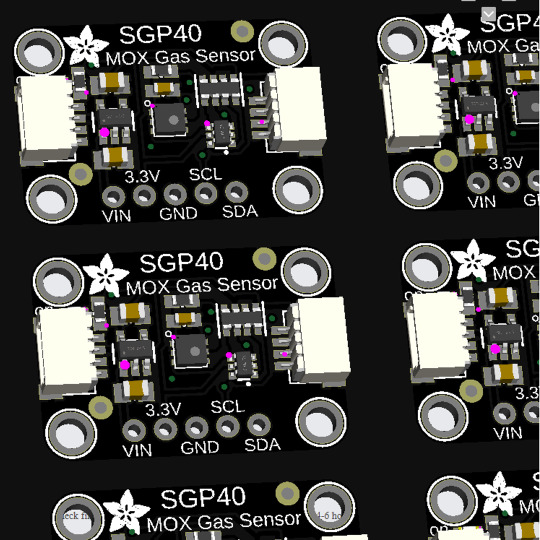
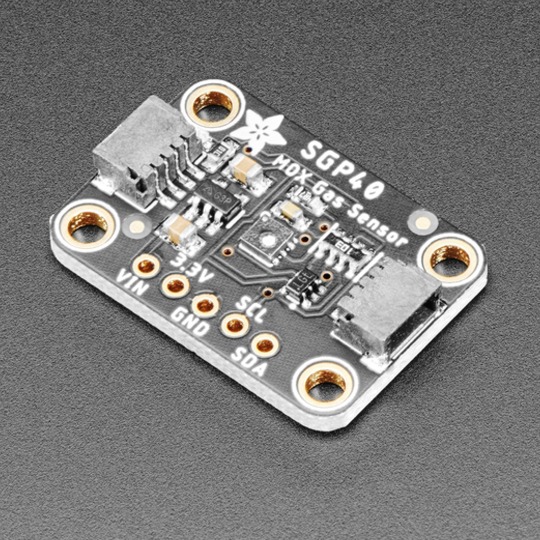
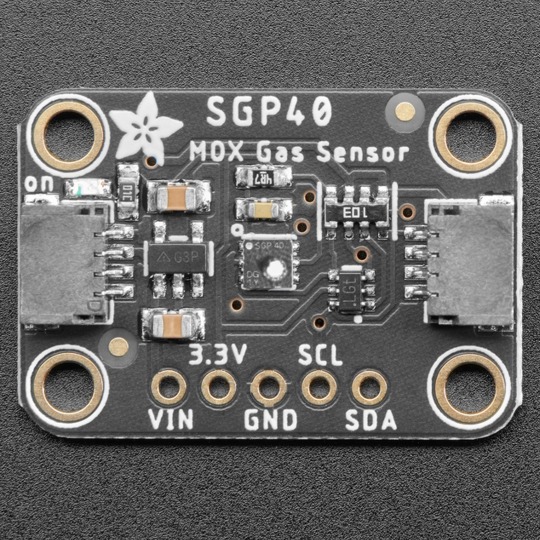

PCB of the day! SGP40 Air Quality Sensor Breakout - VOC Index - STEMMA QT / Qwiic 👃🥛🌬️
sniff sniff … do you smell that? You no longer need to stick your nose into a carton of milk; you can build a digital nose with the SGP40 Multi-Pixel Gas Sensor, a fully integrated MOX gas sensor. This is an excellent air quality sensor from the sensor experts at Sensirion, with I2C interfacing, so you don't have to manage the heater and analog reading of a MOX sensor. It combines multiple metal-oxide sensing and heating elements on one chip to provide more detailed air quality signals.
#sensirion#airquality#sensor#SGP40#adafruit#electronics#opensource#opensourcehardware#mox#digitalnose#vocindex#gasdetection#stemmaqt#qwiic#techinnovation#environmentaltech#smartsensors#iot#cleanairtech#pcb of the day#pcb
9 notes
·
View notes
Text
Smart Sensor Market Poised for Innovation Amid AI Advancements and Cost-Effective MEMS Technology
The smart sensor market is witnessing remarkable growth as industries and consumers alike seek advanced technologies for automation, efficiency, and real-time data analysis. Smart sensors are devices that combine sensing, processing, and communication capabilities into a single unit. Unlike traditional sensors that merely detect environmental changes, smart sensors interpret data and facilitate actionable outcomes. This unique capability positions them as critical components in the evolving landscape of the Internet of Things (IoT), artificial intelligence (AI), and Industry 4.0.
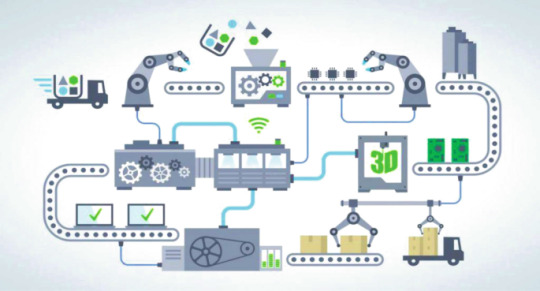
Smart sensors are now foundational in a broad range of sectors, including automotive, healthcare, manufacturing, consumer electronics, and environmental monitoring. In the automotive industry, for instance, they enable features such as adaptive cruise control, collision detection, and lane-keeping assistance. In healthcare, smart sensors are pivotal in remote patient monitoring systems, where they collect and transmit vital signs to medical professionals in real-time. Manufacturing sectors use smart sensors to monitor machinery health and ensure operational efficiency, while smart homes and consumer electronics rely on them for energy management, security, and comfort enhancement.
The market is driven by increasing demand for smart homes and smart cities, growing adoption of wearable technology, and expanding industrial automation. Governments and enterprises globally are investing in infrastructure that incorporates smart sensors, from traffic management systems to energy grids. The proliferation of connected devices also propels the need for accurate and intelligent sensors that can deliver reliable data continuously.
According to market analysts, the global smart sensor market is expected to grow at a compound annual growth rate (CAGR) of over 15% between 2023 and 2030. This surge is attributed to ongoing advancements in sensor technologies, miniaturization, and the integration of wireless communication protocols such as Bluetooth, Zigbee, and Wi-Fi. The falling costs of microelectromechanical systems (MEMS) sensors are also contributing to this trend, making smart sensors more accessible and economically viable.
North America leads the smart sensor market, thanks to strong research and development capabilities, the presence of major technology firms, and early adoption of advanced technologies. However, Asia-Pacific is anticipated to exhibit the highest growth rate due to rapid industrialization, urbanization, and increasing government initiatives for smart city development, particularly in countries like China, India, and South Korea.
Despite the favorable outlook, the market faces challenges such as data privacy concerns, interoperability issues among devices from different manufacturers, and the complexity of integrating smart sensors into legacy systems. Security is a critical concern, especially as smart sensors collect and transmit sensitive information over networks. Ensuring end-to-end encryption and secure firmware updates is essential for building trust and broadening adoption.
Furthermore, the diversity of applications and evolving user expectations demand constant innovation. Companies are focusing on enhancing sensor accuracy, energy efficiency, and AI-driven data analytics capabilities. The integration of machine learning enables smart sensors to not only report data but also detect patterns, predict failures, and support autonomous decision-making processes.
Start-ups and established players alike are investing in new product development and strategic collaborations to capture greater market share. Companies such as Honeywell, STMicroelectronics, Texas Instruments, Bosch, and Infineon Technologies are at the forefront, offering solutions tailored to various industries. Partnerships between tech firms and application domain leaders are creating synergistic innovations that expand the market potential.
In conclusion, the smart sensor market represents a dynamic and fast-evolving sector with transformative implications across industries. As digital transformation deepens and reliance on real-time data increases, smart sensors will become even more integral to modern life. The future of the market lies in continuous technological advancement, strategic investments, and addressing the pressing challenges of security and interoperability. With the right policies and innovations in place, the smart sensor market is poised for sustained and impactful growth in the years to come.
0 notes
Text

Omron D6T-1A-01 Digital Temperature Sensor – I2C, PCB Mount, High Accuracy
The Omron D6T-1A-01 is a high-precision board-mount temperature sensor with digital I2C output. It offers ±1.5°C accuracy and is ideal for non-contact temperature detection in smart devices, HVAC systems, and automation.
Key Features:
Digital Output (I2C) Accuracy: ±1.5°C Operating Range: 0°C to +60°C Supply Voltage: 4.5V – 5.5V Current Consumption: 3.5 mA Mounting: PCB Mount Omron Quality & Reliability
📦 Bulk orders available – DM us or call to get the best price!
📞 Contact Today : +919810987429
📥 Enquire Now : [email protected]
#OmronD6T#TemperatureSensor#DigitalTempSensor#NonContactSensor#I2CSensor#SmartSensor#PCBMountSensor#OmronElectronics#HVACSensor#BoardMountSensor
0 notes
Text
Innovations in Dental Implants: Nanotechnology, Smart Sensors, and More

Dental implants have long been a cornerstone of restorative dentistry, offering a durable and natural-looking solution for missing teeth. However, recent advancements are taking this field to new heights, making implants more effective, comfortable, and personalized than ever before. From nanotechnology to smart sensors, these innovations are reshaping how patients experience tooth replacement. This blog explores the latest breakthroughs, their benefits, and what they mean for anyone considering implants, all while providing insights grounded in expertise and a focus on patient needs.
The Evolution of Dental Implants
Dental implants have come a long way since their introduction decades ago. Traditionally, implants involve a titanium post surgically placed into the jawbone, acting as an artificial tooth root to support a crown. While effective, challenges like long healing times, risk of infection, and bone integration issues have driven researchers to innovate. Today, cutting-edge technologies are addressing these hurdles, improving outcomes and patient satisfaction. Semantic keywords like dental restoration, tooth replacement, and implant success rates highlight the broader context of these advancements.
Nanotechnology: Precision at the Microscopic Level
One of the most exciting developments in dental implants is the use of nanotechnology. By manipulating materials at the atomic and molecular levels, scientists have created implant surfaces that enhance osseointegration—the process where the implant fuses with the jawbone. Nanostructured coatings, such as those made from hydroxyapatite or titanium dioxide, mimic the bone’s natural texture, encouraging faster and stronger bonding.
Nanotechnology also improves the implant’s resistance to bacterial growth, reducing the risk of peri-implantitis, a common infection that can lead to implant failure. For patients, this means shorter recovery times and a lower chance of complications. Biocompatible materials, bone regeneration, and antimicrobial coatings are related terms that underscore the precision and safety of this approach. Imagine visiting your Euless dentist and learning that your implant could heal faster and last longer thanks to these microscopic marvels.
Smart Sensors: Real-Time Monitoring for Better Outcomes
Another game-changer is the integration of smart sensors into dental implants. These tiny devices, embedded within or near the implant, monitor factors like pressure, temperature, and pH levels in real time. For instance, excessive pressure on an implant during chewing could signal a misalignment, while changes in pH might indicate early infection. By collecting and transmitting this data to a dentist’s software, smart sensors enable proactive care, catching issues before they escalate.
For patients, this technology offers peace of mind. Instead of delaying dental implants due to concerns about complications, you can trust that your dentist is receiving ongoing updates about your implant’s health. Dental monitoring, smart dentistry, and implant diagnostics are LSI keywords that reflect this shift toward data-driven care. This technology is particularly appealing for those who value staying ahead of potential problems with minimal invasiveness.
3D Printing: Custom Implants for Every Smile
3D printing has revolutionized many industries, and dentistry is no exception. Using advanced imaging like cone-beam computed tomography (CBCT), dentists can now create highly customized implants tailored to a patient’s unique anatomy. 3D-printed implants and surgical guides ensure precise placement, reducing surgery time and improving outcomes.
This technology also allows for the creation of porous implant structures that promote bone growth, further enhancing stability. Patients benefit from implants that fit better, feel more natural, and blend seamlessly with their smile. Terms like custom dental solutions, additive manufacturing, and personalized implants capture the tailored nature of this innovation. For those hesitant about generic implants, 3D printing offers a reassuring level of personalization.
Bioactive Materials: Enhancing Healing and Integration
Bioactive materials are another leap forward in implant technology. Unlike traditional titanium, which is inert, bioactive materials like calcium phosphate or glass ceramics actively interact with the body to stimulate bone growth. These materials release ions that encourage osteoblasts (bone-forming cells) to thrive, speeding up healing and improving implant stability.
For patients with compromised bone density—a common concern for older adults or those with conditions like osteoporosis—bioactive implants can be a game-changer. They reduce the need for extensive bone grafting, making implants accessible to more people. Bone augmentation, biomaterials in dentistry, and tissue regeneration are related concepts that highlight the healing potential of these materials. This innovation is particularly relevant for anyone worried about eligibility for implants due to bone health.
AI and Machine Learning: Smarter Treatment Planning
Artificial intelligence (AI) and machine learning are transforming how dentists plan and execute implant procedures. AI algorithms analyze thousands of patient records, X-rays, and CBCT scans to predict outcomes and recommend the best implant type, size, and placement. This data-driven approach minimizes human error and optimizes success rates.
For patients, AI means more predictable results and fewer surprises. It also helps dentists identify candidates who might benefit from alternative treatments, ensuring informed decisions. Dental AI, predictive analytics, and treatment optimization are semantic terms that reflect this technology’s role in modern dentistry. Knowing your treatment plan is backed by advanced analytics can make the process feel less daunting.
Benefits for Patients: Why These Innovations Matter
These advancements aren’t just technical feats—they directly improve the patient experience. Here’s how:
Faster Recovery: Nanotechnology and bioactive materials shorten healing times, letting you return to normal life sooner.
Reduced Risks: Antimicrobial coatings and smart sensors lower the chances of infection and other complications.
Personalized Care: 3D printing and AI ensure implants are tailored to your needs, improving comfort and aesthetics.
Long-Term Durability: Enhanced osseointegration and real-time monitoring contribute to implants that last decades.
For those considering implants, these benefits address common concerns like pain, longevity, and cost-effectiveness. Patient-centered dentistry, implant longevity, and dental health outcomes are LSI keywords that emphasize this focus on user intent.
Considerations and Next Steps
While these innovations are exciting, they’re not yet available at every dental practice. Adopting cutting-edge technologies requires specialized training and equipment, so it’s worth researching dentists who stay at the forefront of implantology. Ask about their experience with nanotechnology, smart sensors, or 3D printing during consultations. Cost is another factor, as advanced implants may carry a premium, though their long-term benefits often justify the investment.
If you’re exploring implants, start with a comprehensive evaluation to assess your oral health, bone density, and goals. This ensures you’re a good candidate and helps your dentist recommend the right technology for you. Dental consultations, implant candidacy, and oral health assessment are related terms that guide this process.
The Future of Dental Implants
The future of dental implants is bright, with ongoing research pushing the boundaries of what’s possible. Scientists are exploring self-healing implants that repair minor damage, as well as stem cell therapies to regenerate bone and tissue around implants. These developments promise even greater accessibility and success rates, making implants a viable option for nearly everyone.
For now, technologies like nanotechnology, smart sensors, and 3D printing are setting a new standard. They reflect a broader trend in dentistry toward precision, personalization, and patient empowerment. By staying informed about these advancements, you can make confident decisions about your dental care and embrace a solution that restores both function and confidence.
#eulessdentist#dentalimplants#nanotechnology#smartsensors#3dprinting#bioactivematerials#artificialintelligence#osseointegration#dentalrestoration#toothreplacement#implantsuccessrates#biocompatiblematerials#boneregeneration#antimicrobialcoatings#dentalmonitoring#smartdentistry#implantdiagnostics#customdentalsolutions#additivemanufacturing#personalizedimplants#boneaugmentation#biomaterialsdentistry#tissueregeneration#dentalai#predictiveanalytics#treatmentoptimization#patient-centereddentistry#implantlongevity#dentalhealthoutcomes#dentalconsultations
1 note
·
View note